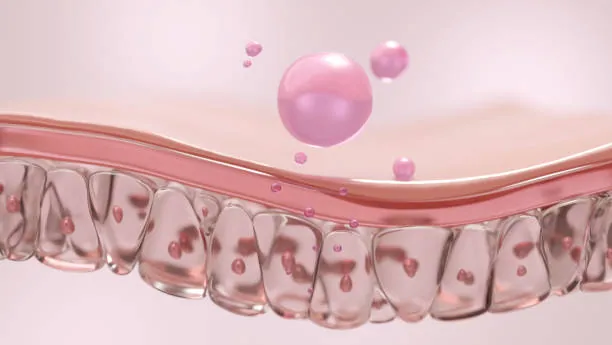
PROMO!
First order? Get 10% OFF with this code: 1storder
Written by

What if there was a way to explore how the body could stay more youthful, energized, and balanced? In recent years, research on Sermorelin treatment has sparked new interest among scientists studying women’s health.
Sermorelin is a peptide often highlighted in studies about aging, recovery, and hormone-related functions. While these findings are still part of ongoing research, the results are opening up exciting insights about how peptides might shape future wellness solutions for women.
This article takes a closer look at Sermorelin, explains how it works in research settings, and explores related compounds like GHK-Cu and Tesamorelin, which are also being studied for their potential benefits.
Explore Sermorelin from Peptide Works, a peptide that stimulates natural growth hormone release to support energy, sleep, and vitality.

Growth hormone (GH) is central to how the body regulates metabolism, energy use, and tissue support. In women, GH helps maintain lean muscle, promotes fat breakdown, and influences bone density through its link with insulin-like growth factor 1 (IGF-1). This makes GH a key focus when studying Sermorelin Treatment, since Sermorelin works by stimulating natural growth hormone release.
Beyond metabolism, GH pathways also connect to skin health and reproductive balance. Research shows GH supports collagen production and cellular repair, processes that influence how skin changes with age. In related areas, GHK-Cu is being studied for wound healing and skin regeneration, while Tesamorelin is investigated for its role in metabolic function. Together, these findings highlight how peptide research continues to map distinct but complementary effects in women’s health.
Because these pathways are tied so closely to everyday wellbeing, Sermorelin Treatment often comes into focus for its potential influence on women’s overall balance.
As women age, natural growth hormone levels decline. Sermorelin Treatment works by signaling the pituitary gland to release more of this hormone in a natural rhythm. This process can influence key parts of wellness that women often notice changing with time.
Energy levels may feel steadier, sleep can become deeper, and metabolism may work more efficiently, supporting a steadier balance between muscle and fat in the body. Another important part of wellness is skin health. Growth hormone supports collagen building, a process that shapes firmness and elasticity.
That’s why Sermorelin is often linked to smoother, more youthful skin in ongoing research. Other peptides also show promising connections to women’s wellness such as GHK-Cu is studied for its potential to renew skin at the cellular level, while Tesamorelin is known for reducing abdominal fat and improving muscle tone. Together, these insights show how peptide treatments may support women’s overall vitality.
Since hormone rhythms influence rest and recovery, researchers also look at how Sermorelin may be connected to sleep and nightly repair.

Sermorelin Treatment may support deeper sleep by restoring a healthier growth hormone rhythm, which normally peaks during the night. When these pulses are balanced, women often find it easier to reach slow-wave sleep, the stage most tied to feeling refreshed in the morning. Better rest also gives the body more time to repair tissue, regulate mood, and recharge energy for the next day.
This recovery process also connects to other peptides relevant to women’s wellness. Tesamorelin has shown potential in supporting muscle repair and fat metabolism, both of which can influence how quickly the body bounces back after activity. GHK-Cu is known for its role in skin and tissue renewal, which adds another layer to how peptides may contribute to the body’s nightly repair cycle.
Because muscle repair is such an important part of resilience, Tesamorelin has become a focus in studies on how peptides influence recovery and body composition.
Tesamorelin is a synthetic peptide designed to encourage the body’s own release of growth hormone. In women, this natural signal is closely tied to how muscle tissue recovers and adapts.
When growth hormone levels rise, they trigger the production of IGF-1, a key factor that helps repair tiny muscle tears caused by daily activity or exercise. This process not only reduces soreness but also supports stronger, more resilient muscles over time.
Another reason Tesamorelin stands out is its dual effect on muscle and fat. Research shows it can help preserve lean muscle mass while reducing excess abdominal fat, a change many women find harder to maintain with age.
Alongside this, GHK-Cu has been studied for its ability to aid skin repair and strengthen tissues, showing how different peptides may influence wellness in unique ways.
With skin repair being a recurring theme in peptide research, GHK-Cu is often examined more closely for its role in tissue health.
Discover Tesamorelin from Peptide Works, a peptide that promotes IGF-1 activity to aid muscle repair, fat metabolism, and body composition.

GHK-Cu is a copper-carrying peptide that occurs naturally in plasma, saliva, and skin, but its levels fall as women age. Lower amounts are linked to thinner skin, slower healing, and visible aging. Research shows GHK-Cu can “switch on” genes that stimulate fibroblasts the skin’s repair cells to produce collagen, elastin, and glycosaminoglycans. These are vital for firmness, elasticity, and hydration.
In tissue repair, GHK-Cu helps remodel damaged areas by clearing old proteins and supporting new cell growth. This activity is why it appears in studies of wound healing and scar reduction.
While Sermorelin Treatment is often connected to growth hormone release and whole-body wellness, GHK-Cu shows a more direct role in skin repair, making both peptides part of a broader look at women’s health in research.
Comparing these three peptides together highlights the different ways they are being studied and how their roles may complement one another.
Shop GHK-Cu from Peptide Works, a copper peptide that supports collagen production, skin firmness, wound healing, and tissue renewal.
In research, Sermorelin Treatment, Tesamorelin, and GHK-Cu are studied for very different roles. Sermorelin Treatment is investigated for its ability to restore natural growth hormone rhythms, which may influence energy balance, recovery, and metabolism in women.
Tesamorelin is explored more specifically for its impact on IGF-1 and body composition, with studies noting potential effects on abdominal fat reduction and lean muscle preservation. GHK-Cu takes another direction, often examined for its local effects in skin and tissue repair, including collagen production, wound healing, and protection against oxidative stress.
The table below outlines how these peptides are being studied in different contexts:
| Peptide | Primary Area of Research | Focus in Studies | Potential Outcomes Being Explored |
|---|---|---|---|
| Sermorelin | Systemic hormone regulation | Pituitary stimulation → growth hormone release | Energy balance, sleep quality, recovery support |
| Tesamorelin | Muscle & fat metabolism | IGF-1 activity, visceral fat reduction | Body composition, lean muscle preservation |
| GHK-Cu | Skin & tissue repair | Collagen, elastin, antioxidant pathways | Skin firmness, wound healing, tissue renewal |
These comparisons provide context for understanding how current studies approach each peptide, and they also raise questions about where research on Sermorelin Treatment may be heading.
The future of Sermorelin Treatment is being closely examined in research on women’s wellness, especially for its links to aging, recovery, and hormone balance.
As studies continue, related compounds such as Tesamorelin and GHK-Cu may also provide valuable insights into women’s health at the cellular and systemic level.
At Peptide Works, we provide high-quality research peptides for investigators worldwide who want to explore this growing field.
All peptides and compounds mentioned are strictly for research purposes only and not for human use.
[1] Walker RF. Sermorelin: a better approach to management of adult-onset growth hormone insufficiency? Clin Interv Aging. 2006;1(4):307-8.
[2] Wang X, Wang S, Wu H, Jiang M, et al. Human growth hormone level decreased in women aged <60 years but increased in men aged >50 years. Medicine (Baltimore). 2020 Jan;99(2):e18440.
[3] Morselli LL, Nedeltcheva A, Leproult R, Spiegel K, et al. Impact of GH replacement therapy on sleep in adult patients with GH deficiency of pituitary origin. Eur J Endocrinol. 2013 Apr 15;168(5):763-70.
[4] Makimura H, Murphy CA, Feldpausch MN, Grinspoon SK. The effects of tesamorelin on phosphocreatine recovery in obese subjects with reduced GH. J Clin Endocrinol Metab. 2014 Jan;99(1):338-43.
ALL CONTENT AND PRODUCT INFORMATION AVAILABLE ON THIS WEBSITE IS FOR EDUCATIONAL PURPOSES ONLY.
DISCLAIMER: These products are intended solely as a research chemical only. This classification allows for their use only for research development and laboratory studies. The information available on our Peptide Works website: https://peptide-works.com/ is provided for educational purposes only. These products are not for human or animal use or consumption in any manner. Handling of these products should be limited to suitably qualified professionals. They are not to be classified as a drug, food, cosmetic, or medicinal product and must not be mislabelled or used as such.
Peptide Works
Related Articles

Best Peptides for Women in Perimenopause: From Libido to Energy
Do you feel drained, struggle with focus, or notice your drive slipping during perimenopause? These changes are some of the

PT-141 for Women in Perimenopause: A Breakthrough for Low Libido
Perimenopause can bring more than just physical changes it often affects how women feel about intimacy, confidence, and connection. Many

Can Vitamin B12 Immune System Support Enhance the Effects of Thymosin Alpha-1?
The Vitamin B12 immune system link is important because this vitamin plays a crucial role in DNA synthesis, methylation, energy